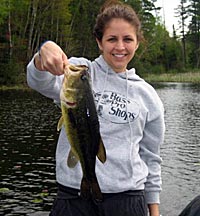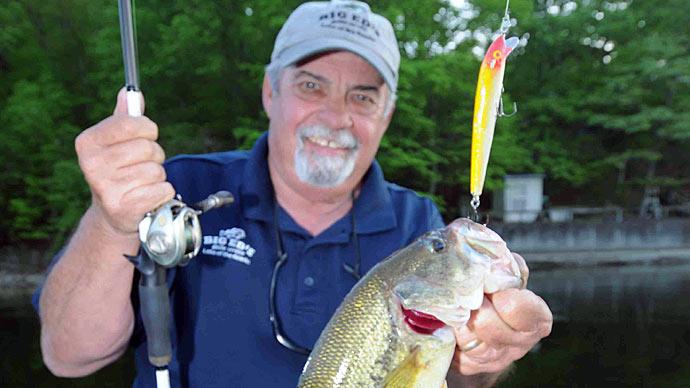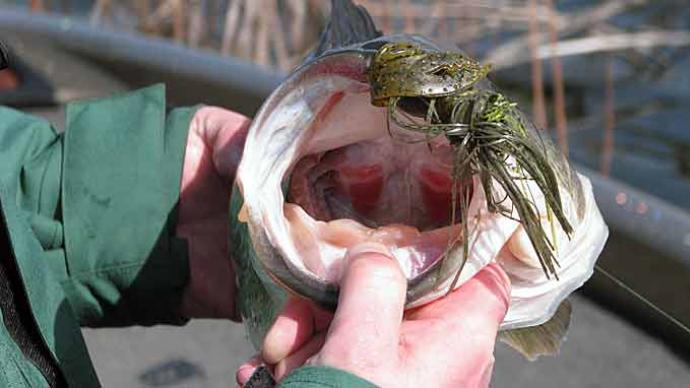
Lure selection is a dilemma anglers face each spring, especially after a winter spent loading tackle boxes with promising new lures.
Spring bass can be less particular about the baits they strike, but if you don’t match your lure choice to the conditions at hand, you’ll miss fish you could have caught.
There’s nothing wrong with giving new lures a try, but remember that some lures aren’t suitable for spring. If a lure isn’t productive during the spring, it may work better later in the year.
You only need about five types of lures in spring – spinnerbaits, tube jigs, soft-plastic jerkbaits, jig-and-pig combinations and crankbaits. Those lures will handle just about every situation, including aggressive or wary bass holding on various structure in deep or shallow water.
The spinnerbait is my favorite because I can cover a lot of water quickly and work the lure from zero to 10 feet – a depth range spring bass tend to inhabit. It’s relatively weedless and I can fish at varying speeds. It’s also effective in clear or muddy water.
The tube jig is for fooling bedding bass, while a soft-plastic jerkbait takes cruising, spawning and postspawn fish that aren’t in the impulsive-strike mode. Crankbaits catch prespawn fish scattered on the flats, and the jig-and-pig fools big bass in heavy cover or along drop-offs.
I refine my selections on the basis of water color, water temperature, types of structure and the size of the forage. I pay close attention to what’s going on in a lake, noting that spawning activity will affect what lures and how aggressively the bass will feed.
Here are my guidelines; take them to heart when selecting spring lures.
Water clarity: I prefer subtle lure presentations in clear water and bigger/brighter colored lures in muddy water most of the time. As a rule, I match lure color to water color.
In early spring I don’t use as many rattling lures as I do after the water warms up. In clear, cool water, I catch more fish with thin-bodied lures that displace less water. After the water rises into the upper 60s, bulkier and more aggressive lures begin to pay off.
Water temperature: In cooler water, I slow my presentation and fish more deliberately. I may use crankbaits and spinnerbaits but I try to slow the retrieve. When pitching jigs into bushes, I’ll work each bush more methodically than I do during the summer. If I think bass are spooky, I may opt for the soft-plastic jerkbait and finesse it around the cover.
Type of structure: If bass are holding to logs, buckbrush or grass, I’ll choose more weedless lures, such as a spinnerbait or jig. If the fish are scattered on a flat, then a spinnerbait or the crankbait would be more appropriate.
Size of forage: If the lake has threadfin shad, you can scale down the size of your lure to match the forage. But on lakes with gizzard shad, the forage will be all sizes. However, during the prespawn, bait size is less important because you’re trying to get bass to strike impulsively as opposed to enticing them with your lure.
When you head to the lake this spring, stick to those basics and your fishing success is bound to improve.
You can find more articles, quick tips and much more at HankParker.com.




